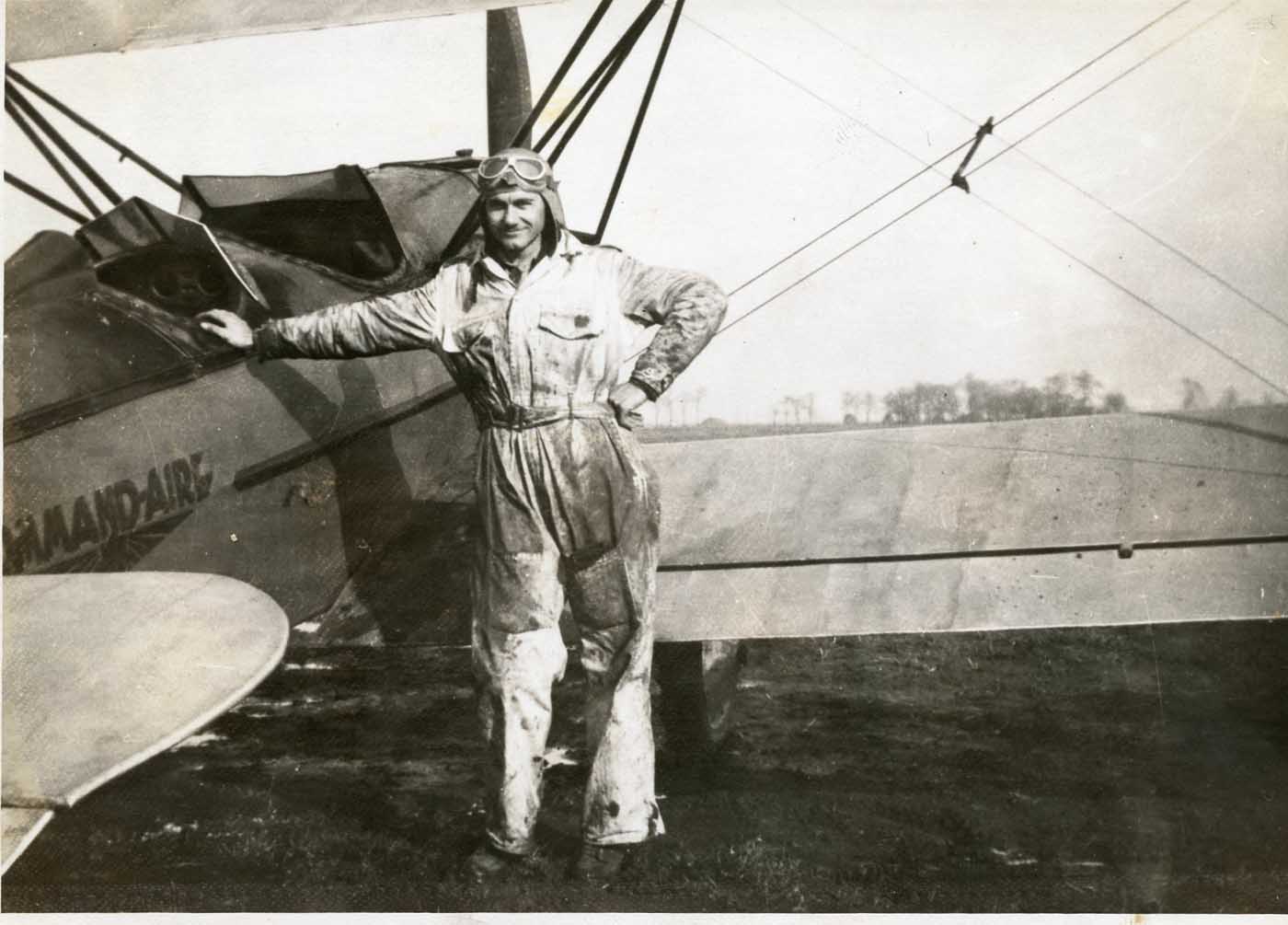Photos courtesy of Jahn A. Luke
January 2021 marked 50 years since Midwestern aviation pioneer Albert H. Luke retired from his longstanding role as an instructor at Lewis College (now Lewis University in Romeoville, Illinois). During his remarkable career in aviation — which included more than three decades teaching at Lewis College — Luke became the first helicopter instructor pilot in the Midwest, brought the first commercial helicopter into the region, was instrumental in setting up one of the first private aviation flight schools in the country in the 1930s, and was responsible for establishing the first helicopter training course offered by a college in the United States.

Born in Mantorville, Minnesota, on March 11, 1908, Luke moved with his family to Cedar Rapids, Iowa, at a young age. Following his parents’ divorce, Luke and his siblings were put in an orphanage — Iowa Soldiers’ Orphans’ Home in Davenport, Iowa. Wanting to leave the confines of the orphanage and look for new life experiences, he ran away three times during his stay there. At 16, he got a job on his uncle’s farm in western Iowa.
It was there that he saw his first airplane, a Curtiss JN-4 Jenny, which had landed on a field close by. Intrigued, Luke ran over to see the aircraft as it rolled to a stop. He decided at that moment he was going to be a pilot.
By the time he reached 20, Luke had enrolled in a course at the school of aviation at Greer College in Chicago, Illinois. He was able to finance flying lessons at the Midway Airport through a job as a metal polisher.

The following year, Luke purchased a Command-Aire 3C3 two-seat biplane, and was soon building hours barnstorming throughout Illinois, offering rides for $1.
By 1933, the 25-year-old Luke was still making a living flying and barnstorming at many country fairs, but he also began to instruct students. He had moved on to flying other fixed-wing aircraft, including a Great Lakes 2T-1A, Velie Monocoupe 70, and a Waco GXE that he had just bought. At the time, he was operating out of the Joliet Municipal Airport.
Around that time, Luke landed one of his airplanes in a wheat field just west of Lockport, Illinois. This was the site of the Lewis Holy Name Technical School, which had just opened for high school students. He was asked by the school if the field was level enough for an airstrip. The students had just worked on an airplane project — a Ryan B-1 (a “sister” ship to the Spirit of St. Louis) — which had been bought at auction and donated to the school. However, the school did not have a pilot.
They asked Luke if he would give rides at an upcoming dedication of a partially built hangar. Before doing so, Luke needed to take the airplane around the patch solo. With the old J5 engine missing a few times, he was able to fly the plane and landed it on the second try. That October, he flew a number of interested patrons who wanted to get a chance to experience the thrill of an airplane ride.

The following year, the school was renamed the Lewis Holy Name School of Aeronautics. Bishop Bernard J. Sheil, one of the leading figures behind the school, asked Luke if he would offer instruction in ground aviation mechanics, including a flying lessons program within the Catholic church organization. Chicago philanthropist Frank J. Lewis, already heavily involved in the school’s development, became a generous contributor and financial backer to the idea. Luke was similarly excited, and became one of the founders of the school’s aviation program.
Before long, a decent runway and airport were constructed on the property, along with a campus for the training of youth in aircraft maintenance, coupled with flight instruction. The school was a success right from the start, training hundreds of pilots and navigators, including flight instructors under contract to the War Training Service for the military during the Second World War.
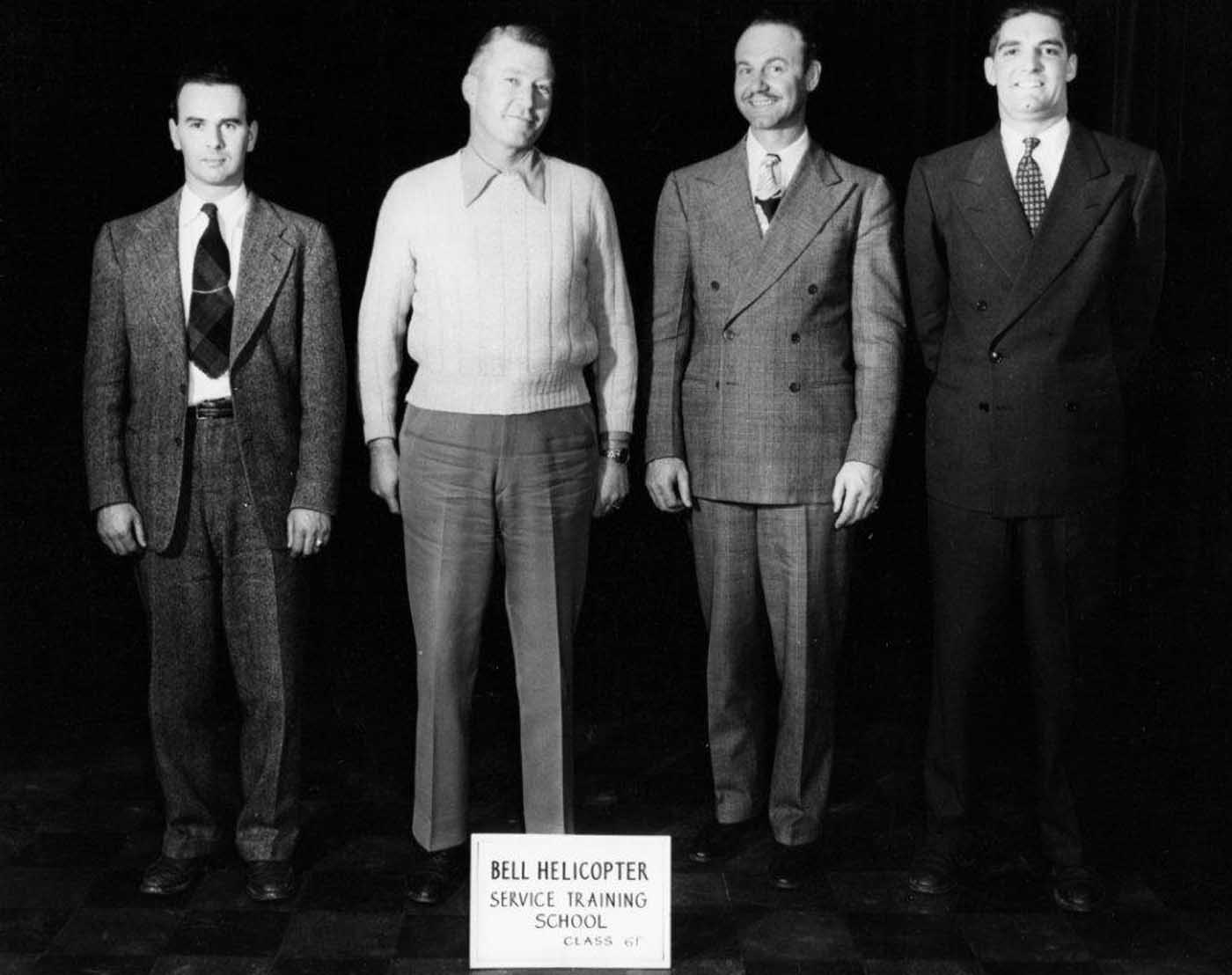
Rotary-wing transition
As the end of the war approached in 1945, Luke closely watched the development of helicopter technology, and saw in it a way to improve the school’s aviation program. The following year, Bell Aircraft’s two-seat Model 47 — the first commercial helicopter — was certified. Luke ensured the school quickly purchased a Model 47B (with dual controls and a two-way radio), and secured a place on Bell’s training course in Niagara Falls in January 1947.
Joe Mashman, Bell’s demonstration pilot, gave Luke his first helicopter training flight. He flew his first solo just over a week later. By the end of the month, he had flown over 25 hours, and received a certificate of achievement from Bell.
Luke then attended a maintenance training course, under the direction of Bell’s Joseph Dunne. He was accompanied by Robert Lumann, who was the head of the newly-formed helicopter maintenance department at Lewis.
At the end of February, Luke took delivery of Lewis College’s new Bell 47B, and ferried it back to the school in Lockport. It was a grueling trip for Luke, including an autorotation and forced landing when his engine quit. Once on the ground, he was able to restart the engine and continue on his journey to Lockport.
The following day, he flew the aircraft to Chicago, where it drew a lot of attention on display at the Sports and Travel Exposition. In mid-March, Luke demonstrated the Bell 47B at the Lewis-Lockport airport, providing many of the attending crowd their first opportunity to see a helicopter in flight.
As his experience grew, the Civil Aeronautics Authority designated Luke the first commercial helicopter flight examiner in the Midwest.
Instruction for new pilots began shortly afterwards at the renamed Lewis College of Science and Technology. His first students included Mike Meger, who would eventually become head test pilot for Enstrom. Another of his early students was Marilyn Himes Riviere, who became the first woman helicopter flight instructor in the U.S. A few Canadian pilots were also trained by Luke.
As his experience grew, the Civil Aeronautics Authority (CAA) designated Luke the first commercial helicopter flight examiner in the Midwest.
Of course, Luke wasn’t only instructing. In 1948, he flew Maria Strohmeier, the reigning Mrs. America, to a local food convention; worked with stunt performer Marilyn Rich, known as the “Original Helicopter Girl,” who performed acrobatics on rings beneath the Bell 47B at midwestern events; and flew the first experimental air mail service in Chicago during 1949.
Enhancing the fleet
In August 1949, the college added the first of two Bell 47D-1s to its fleet — among the first production 47D-1s sold by Bell. At the time, the college was branching out into charter operations, including a topographical survey for a pipeline company. Both Bell 47D-1 helicopters were used on power line patrols during 1949 for the Tennessee Valley Authority.
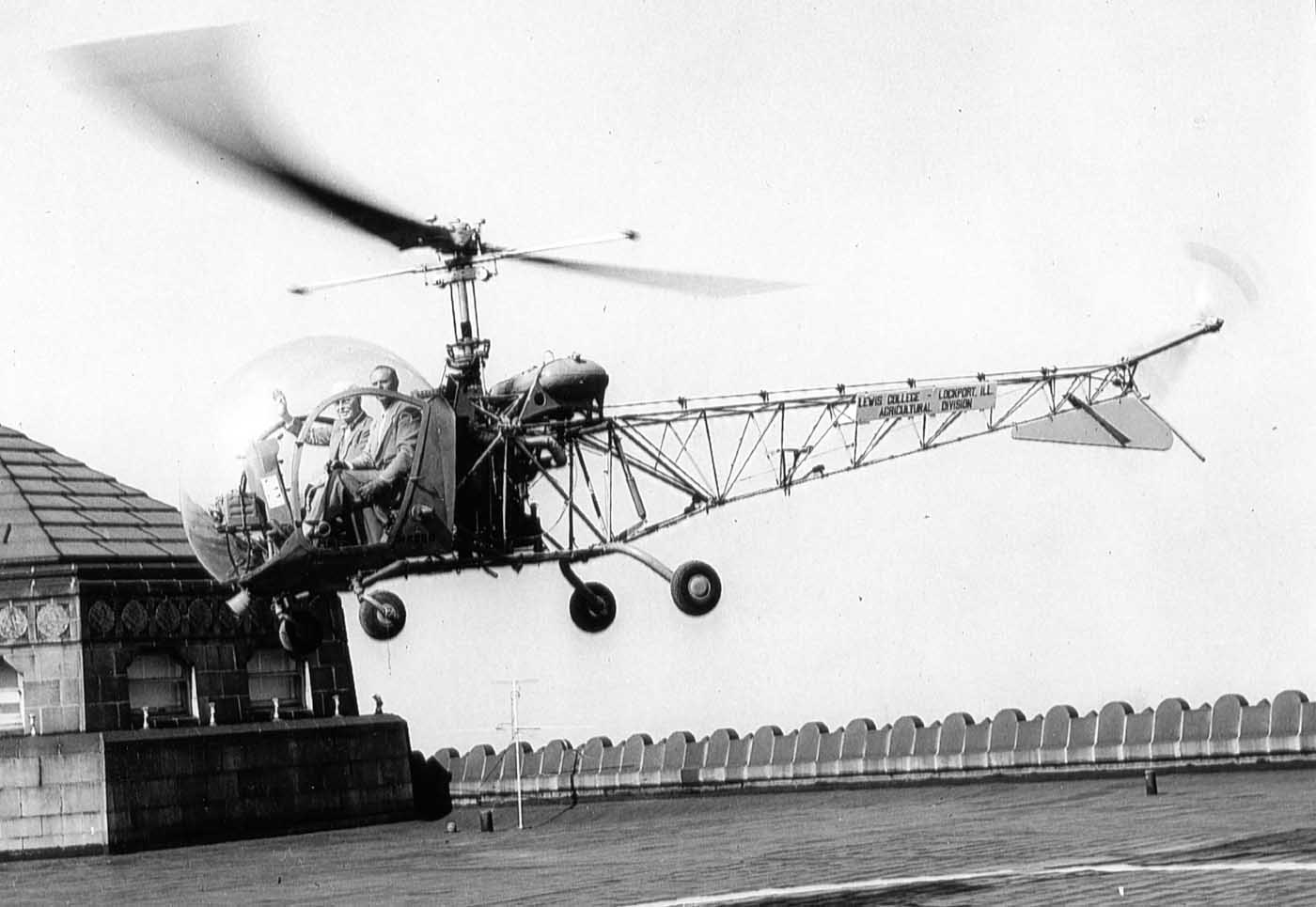
Other utility work for the Lewis helicopters continued throughout the 1950s until the mid-1960s. Luke became involved with seeding strip mines in Ohio, Missouri, and Oklahoma; spraying crops to protect against insects and worms, and combating mosquitoes in Illinois, Indiana, and Ohio; and performing construction and maintenance in Illinois and Iowa. More topographical work took him to Wisconsin, northern Minnesota, and down to Houston, Texas.
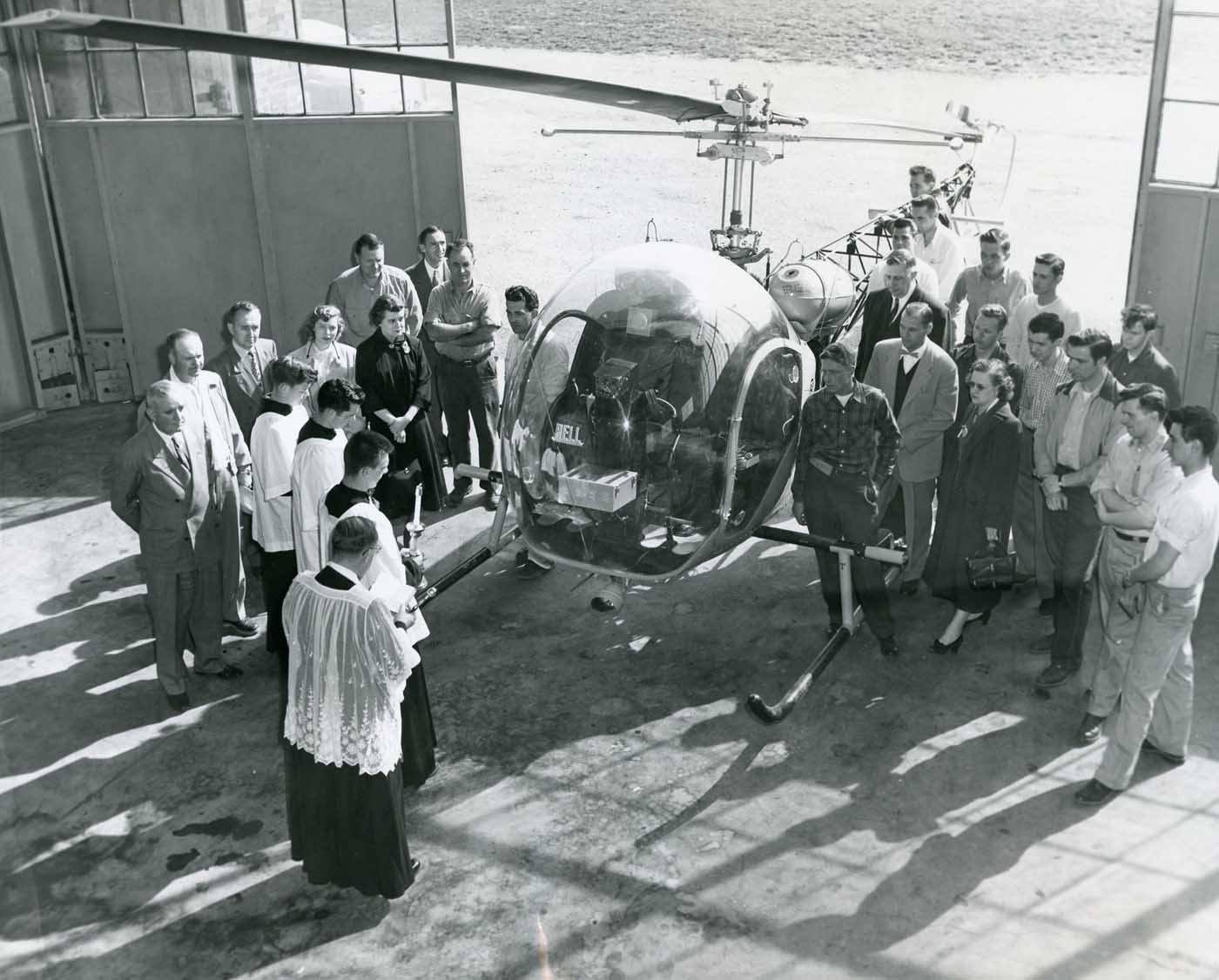
The Lewis helicopters were used for many business promotions during this period, including Santa Claus deliveries and the opening of grocery and department stores in a number of states, including Wisconsin, Michigan, and Ohio. There were even businesses as far away as Georgia, Pennsylvania, and Louisiana requesting the aircraft’s services for utility and business promotion work. However, the cost to ferry the ships with pilots to these locations made it cost prohibitive.
In 1951, a non-profit educational organization supported by the U.S. and Canada took Luke to what was then the Alaska Territory. Using the Bell 47D-1 (which had to be dismantled, flown up to Yakutat on a C-46 aircraft and reassembled), Lewis College was able to support the Arctic Institute of North America expedition in studying the movement of the Malaspina Glacier. Luke transported scientific personnel and supplies from a beach camp to remote areas that were only accessible by helicopter. From July to August, he completed 177 landings on a glacier in the Saint Elias Mountains near the Alaska-Yukon border.

In June 1952, the Bell Model 47B was involved in an accident following an autorotation at the Lockport school. The right-front leading gear had collapsed when the helicopter struck the ground. Luke and a Chicago CAA official were on board, but they were able to escape the helicopter safely before it caught fire. The aircraft was completely destroyed.
The college purchased its fourth new Bell, a Model 47G, in March 1954. This new helicopter was used primarily to support a power line patrol contract with the Public Service Company of Indiana. This contract would last more than 15 years.
Notable flights during this period included Luke landing at the Indianapolis Speedway at the Memorial Day 500 Race, to ensure that the local Indianapolis newspaper got the story immediately to the fans; and delivering a large pane of glass to the top of a new 22-storey skyscraper apartment building in downtown Chicago.
In April 1956, Al Luke landed his Bell 47D-1 with entertainer Arthur Godfrey on top of the Sherman House in Chicago for the inauguration of Chicago’s first heliport. During this time, he also flew Chicago philanthropist Frank J. Lewis, comedian George Jessel, and prize-winning photographer Margaret Bourke-White, whose aerial photos were featured in Life Magazine.
In 1959, Lewis purchased a new Bell 47G-2, which provided more horsepower and range than the 47G. The college added two used Bell 47Gs in the early ’60s, which were primarily used for training and transport, as well as some utility work.
Luke continued to oversee helicopter operations at the college until 1967. His last logged flight in a helicopter was in a Bell 47G-2 on Nov. 5, 1966. He had logged a total of 3,468 hours and 55 minutes during his helicopter career.
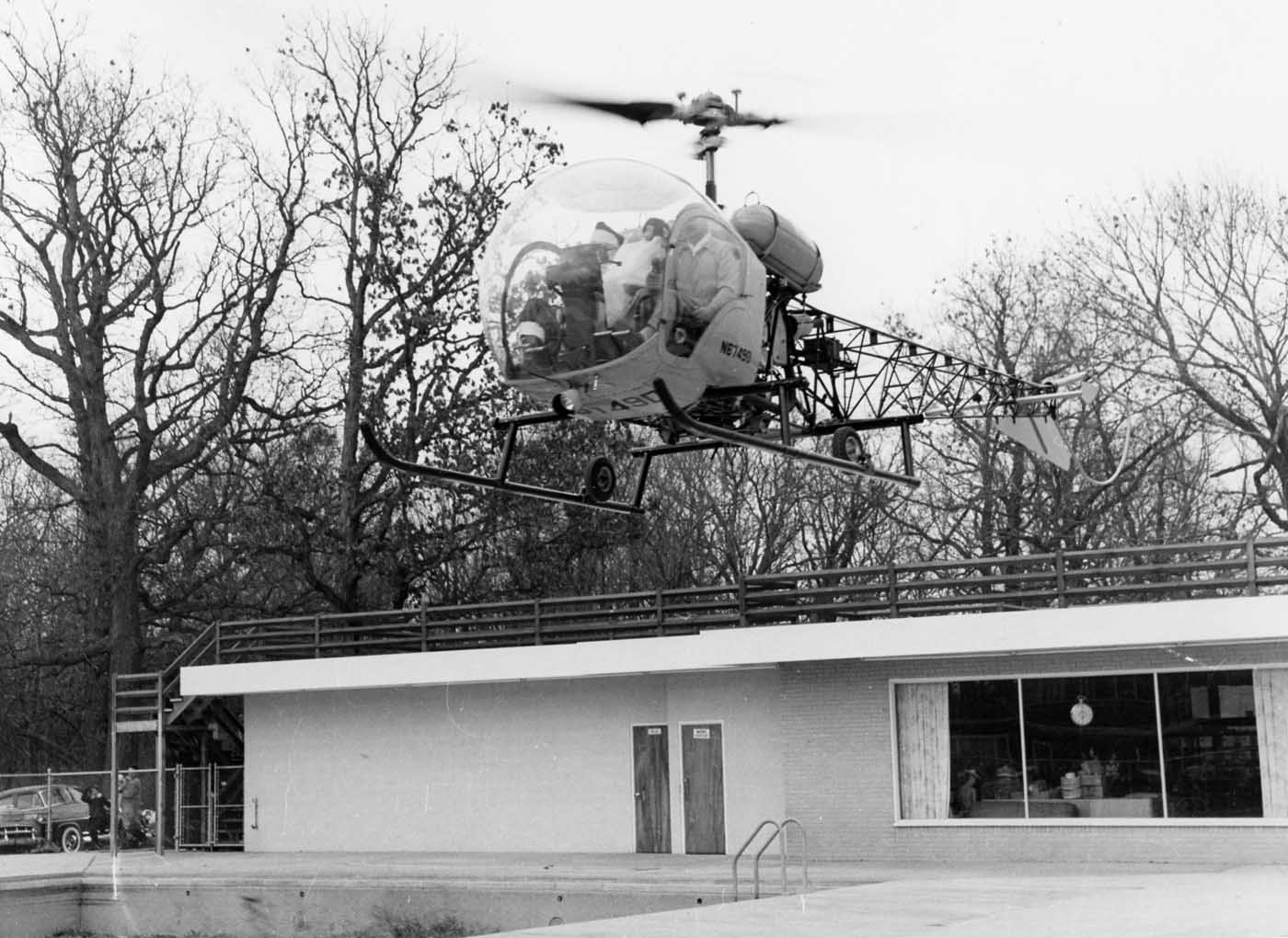
On March 28, 1968, Luke was honored by Lewis College (which was then called Lewis-St. Francis of Illinois) for his long and outstanding service and dedication to the Institution. In addition to flying, Luke had held the role of superintendent of the Lewis School during the 1940s. Up to his retirement in 1971, Luke was the manager of the Lewis-Lockport airport.
Al Luke passed away on May 31, 1978, in Fort Smith, Arkansas. He was 70. A helicopter pioneer, he will long be remembered for helping to enhance and grow a then-small rotary-wing industry in the late 1940s and early 1950s in the U.S. Midwest.
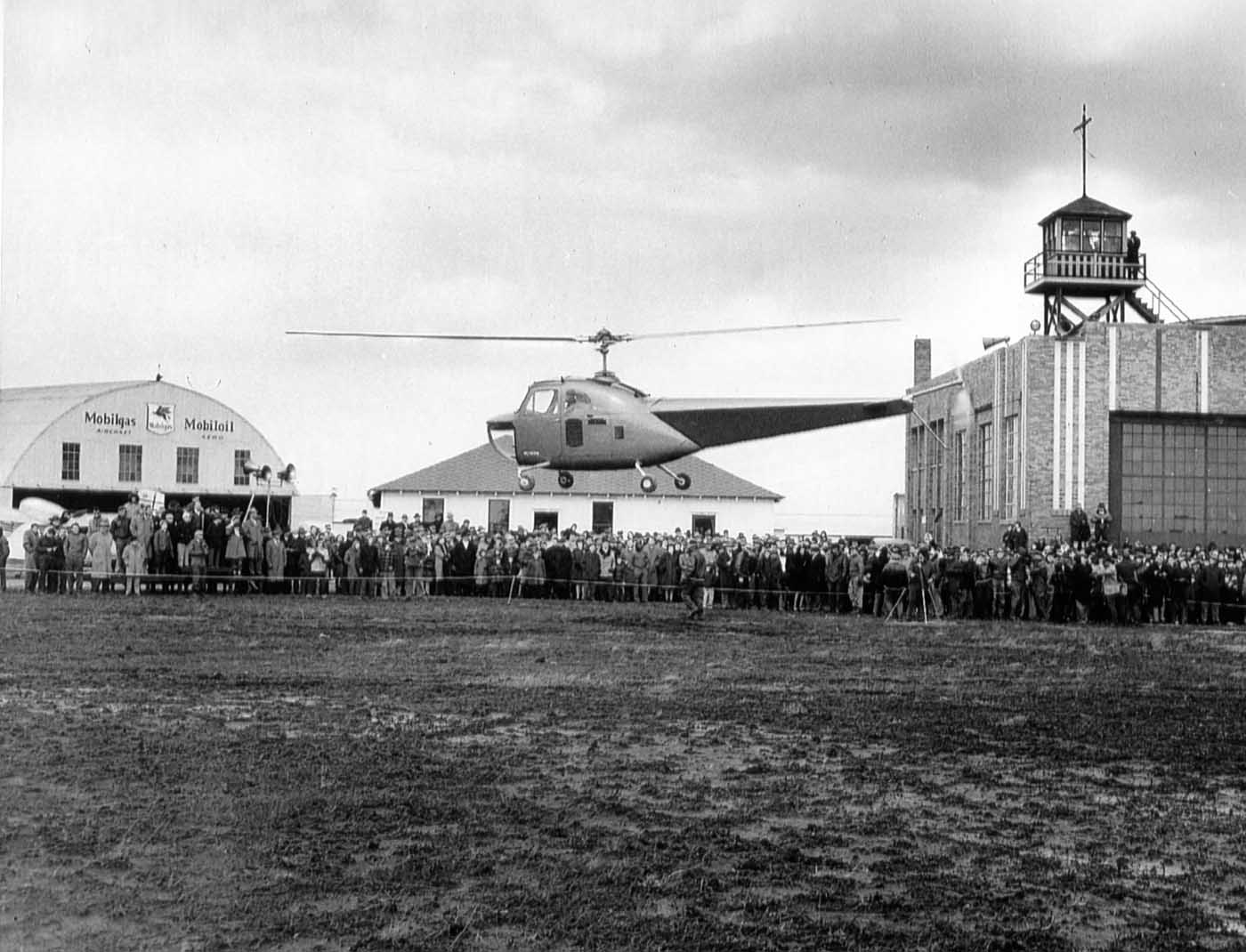
The author would like to acknowledge the contribution of Jahn Luke (Al Luke’s son) in making this story possible.





